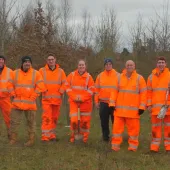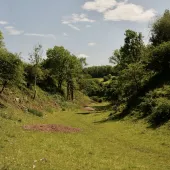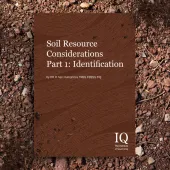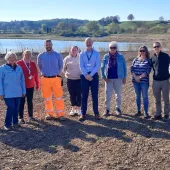Uniquely Positioned
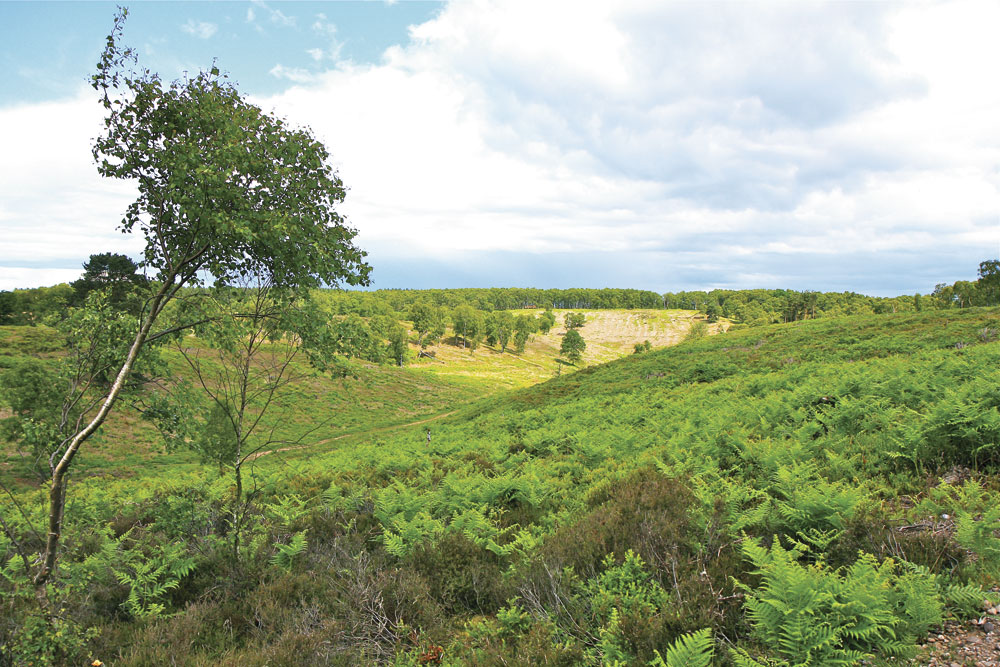
Mineral Products Association Awards highlight industry’s restoration legacy and quarries’ potential to help halt biodiversity decline
The mineral products industry is uniquely placed to help halt biodiversity decline. That was the message from the chief executive of Natural England and a host of other key stakeholders to members of the MPA at the Association’s Awards event ‘Building on our Legacy…Realising our Potential – Biodiversity and the Mineral Products Association’, which took place last October.
With a wide range of NGOs and environmental organizations in attendance, the event at the Royal Society in London charted the way forward and shared best practice through the long-running MPA Restoration Awards and the inaugural Natural England Biodiversity Awards.
UK biodiversity loss is a growing concern and the mineral products industry is uniquely placed with significant potential to contribute to achieving the Government’s biodiversity targets. MPA members already have a long legacy of high-quality restoration and biodiversity enhancement.
Around 90% of the entire mineral products industry is represented by MPA members, and the land they manage or control is equivalent to a small National Park and includes at least two national nature reserves, 22 local nature reserves, 15 field study and education centres and 13 nature trails. The RSPB estimates that the industry could, on its own, deliver UK biodiversity targets for nine out of 11 priority habitats.
At the Awards event, the results of new research were revealed, highlighting that:
- With 1,300 active sites across the UK, 56,000ha of the minerals industry estate is potentially suitable for restoration to priority habitats, as defined in the UK Biodiversity Action Plan (BAP).
- The industry is leading the way in restoring the population of the previously declining bittern by ‘hosting’ 15% of the UK’s breeding pairs in reed beds created following quarrying.
- More than 20 minerals sites have, to date, been certified by the externally assessed Wildlife Trusts Biodiversity Benchmark.
- Operators are now routinely creating and committing to long-term management of threatened habitats, making a significant contribution to delivering national and local biodiversity action plan targets.
- MPA members have planted a million trees during the last five years as part of their planned operational and restoration activities – a significant achievement and one that mirrors the Government’s own aspirations for the next four to five years.
- MPA members have planted 57km (36 miles) of hedgerows during the last five years.
- MPA members have built 21km (13 miles) of dry stone walls during the last five years (2006–2010).
Dr Helen Phillips, chief executive of Natural England, a special guest at the event who presented the Natural England Biodiversity Awards, said: ‘There are few other industries where we see the same degree of inspiring commitment, coupled with a deep knowledge of what you’re doing and also a real enthusiasm for wildlife and for nature. You take corporate social responsibility to new heights.’
A good example of this is the MPA’s close working relationship with Natural England and the RSPB on the Nature After Minerals (NAM) initiative, which aims to identify and deliver biodiversity opportunities on former minerals sites. NAM has advised the industry on the restoration of over 2,000ha since 2006.
Speaking on behalf of NAM, Dr Darren Moorcroft, head of conservation delivery at the RSPB, said: ‘Nature is intrinsically valuable and studies demonstrate it is fundamentally important to our well-being and our economy, but we are losing it at an alarming rate. The mineral products industry is uniquely positioned to step up and help turn this around.’
Nigel Jackson, chief executive of the MPA, added: ‘MPA members’ quarries have long delivered biodiversity benefits and will be the wildlife havens of the future. I believe that the legacy we have built and the potential that we have to do more could make biodiversity a unique differentiator and defining characteristic for our sector.
‘I hope that we are finally seeing a shift in the perception of our industry from a threat to an opportunity, and from unwanted to essential and increasingly sustainable.’
Seven MPA Restoration Award winners were announced at the event, including the winner of the top prize, the Cooper-Heyman Cup (see QM, Nov 2011). On the biodiversity side, there were 15 winners, which included the winner of the top Natural England Biodiversity Award 2011 (in association with the Mineral Products Association), the Runner-up and four smaller members who were presented with the MPA Award for SME Commitment to Biodiversity and Nature Conservation – Brett Group, Marshalls Plc, Sibelco UK Ltd and Smith & Sons (Bletchington) Ltd.
A special MPA Award for Personal Commitment to Biodiversity and Nature Conservation was also awarded posthumously to Brian Butterfield (pictured), who was associated with Lafarge Aggregates’ Panshanger Quarry, near Hertford, for 48 years.
The 2011 Cooper-Heyman Cup winner was Tarmac Ltd’s Bellmoor and Lound Estate, in Nottinghamshire, which represents a major exercise in the restoration and recycling of the countryside. Since the 1940s, the quarrying of sand and gravel has moved progressively through more than 600ha and in its wake has come not just restored farmland and woodland, but a string of wildlife, community and leisure uses – and huge public enjoyment.
At the heart of the site lies a 300ha area that was designated as a Site of Special Scientific Interest (SSSI) in 1992 and has been the focus for the long-running restoration partnership with the Nottinghamshire Wildlife Trust. One of the site’s great achievements is the Lottery-funded Idle Valley Rural Learning Centre, which is operated by North Nottinghamshire College and is the base from which the Wildlife Trust also runs numerous community programmes.
Among the other valued facilities is the 70-acre Linghurst Lakes parish park at Lound, an area restored in the early 1990s. Thousands of trees have been planted, wildflower areas created and grass paths defined. The site is now managed by a sub-committee of the Lound Parish Council and widely used by villagers.
The winner of the inaugural Natural England Biodiversity Award was CEMEX UK’s Rugeley Quarry (see lead photo). At this former sand and gravel quarry, which lies within the Cannock Chase Special Area of Conservation, CEMEX UK will, by 2032, have added more than 200ha of priority lowland heathland habitat – contributing to both UK BAP and Staffordshire Local BAP targets for this habitat.
The judges were particularly impressed by the fact that CEMEX had voluntarily decided not to quarry sand and gravel to the permitted depth to ensure that the new heathland remained dry. ‘The sheer extent of the restored lowland dry heath and the quality of the habitat produced was outstanding’, they said in their report.
Open mosaic habitats have also been created at Rugeley, as well as dwarf shrub heath, acid grassland and wet grassland with areas of fresh water. The site supports priority BAP species including nightjar, tree pipit, woodlark, great crested newt and adder. CEMEX have also made large donations to a nearby Staffordshire Wildlife Trust volunteer centre and the Cannock Chase Visitor Centre.
For further details of the MPA Restoration Awards and the inaugural Natural England Biodiversity Awards, visit: www.mineralproducts.org/restoration_awards.htm


